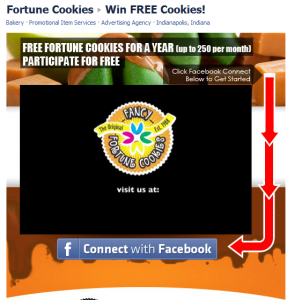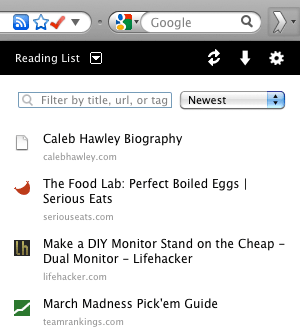10 Tips for Building a Quality Twitter Following
I’ve been using Twitter for five years, and I recently topped 10,000 followers. Lots of folks have more followers than I do, but the quality of my following is what’s important to me. Most of my followers are people who share my interests in the Internet, media, and digital marketing. They’re responsive, supportive, and helpful, and we have a great time together.
Over the years, I’ve learned a few basic tactics for building a quality following. Perhaps you’ll find them useful. Note that these tactics apply to using Twitter for business. If you want to build a cult of personality or just run up your numbers, there are better ways to do it.
1. Stay focused. I’ve posted an average of just four tweets per day for the last five years, which is far fewer than the output of many other Twitter users. That’s because I limit most of my tweets to the professional topics that interest me or that others may find useful. I share little information about my personal life. People don’t care what I had for dinner, but if the restaurant is a place I’d recommend to others, I’ll frame a comment in that context. When people see my name in their tweet stream, I want them to know they’re likely to find something there that interests them.
2. Share your handle everywhere. Of course, your Twitter handle should be in your e-mail signature line. But consider the other ways people might find you. I include my Twitter name (@pgillin) in my letterhead, as well as on every slide in my presentations. Don’t forget to post your presentations to [4]SlideShare, where your PowerPoints can get many more views than they ever do in front of an audience. Add your Twitter handle to your LinkedIn profile, and if you’re ever featured as a speaker, make sure the promotion page features your Twitter name, as well.
Read eight more tips on The CMO Site
Five LinkedIn Gems for Marketers
Most people think of LinkedIn as a great resource to find jobs and consulting work, but it’s also a treasure trove of competitive intelligence and prospecting opportunities.
LinkedIn has become the major force in social networking for business-to-business professionals. Its core strength is the information the service collects about its 140 million members and the many ways it creatively combines those data points to make it easy to find the people and information you want.
Here are five little-known LinkedIn gems.
1. Company profiles: If you don’t have a company profile on LinkedIn, you should. Late last year the service made it possible for members to follow companies just as they follow people. That means your status updates appear in their activity streams along with news about their friends. Want to know who’s following your company? You can find that out, too.
You should also consider taking advantage of the “products and services” tab in company profiles. You can set up dedicated sub-pages for each of your product lines and ask people to post recommendations. One thing marketers will love: People can only post recommendations, not criticisms. It’s like a love nest for your customers.
2. Insightful statistics: LinkedIn mines its member database to create statistics about the companies they work for. This can be useful in prospecting, recruitment, and competitive intelligence.
Click the “Check out insightful statistics about…” link in the right sidebar of any company profile. Inside you’ll find information about job function composition, company growth as reflected by total LinkedIn memberships, and how frequently people are changing titles. These can indicate if a company is having a turnover problem or whether growth is slowing. LinkedIn also gives you a list of employees who have recently taken new jobs or left the company. This can alert you to sales opportunities or management gaps. Recruiters will like the “Most recommended at…” feature, which lists employees who have the largest number of peer recommendations.
Read about the other three gems on The CMO Site
Five Facebook Tips for Small & Midsize Businesses
Most small businesses are terrible at marketing in general and online marketing in particular. That’s understandable: The founders are usually more passionate about what they do than about promoting themselves.
But with Facebook becoming the place you just have to be for businesses of all sizes, a little marketing know-how comes in handy. I recently spoke to Mark Schmulen, general manager of social media at the small-business-focused e-mail service provider Constant Contact about how to go beyond the Facebook wall and make the social network a practical and measurable small business marketing platform.
“When we look at what platforms our small business customers are using for social media marketing, 94% of them are on Facebook,” Schmulen said. However, “Most small businesses are doing Facebook without knowing why they’re doing it.”
That’s the herd mentality at work. While it’s pretty easy to create a Facebook page, the task of convincing visitors to create persistent relationships through the “Like” button and to engage in conversation requires different skills. Forrester Research has estimated fewer than 15% of people who click a Like button ever visit the page again. Getting that repeat traffic is the special sauce of Facebook success.
Here are five tips that Schmulen recommends:
Tip #1: Know your goals. Sounds simple but it ain’t necessarily so. Depending on the business, goals might range from generating orders to attracting subscribers to building thought leadership. Whatever your goal, you need an offer to match.
 Archway Cookies and Fortune Cookies are both focused on trials, the first through coupons and the second via a contest. Vindale Research isn’t in the food business, though; it wants to recruit people who are interested in getting paid to take surveys.
Archway Cookies and Fortune Cookies are both focused on trials, the first through coupons and the second via a contest. Vindale Research isn’t in the food business, though; it wants to recruit people who are interested in getting paid to take surveys.
Each company matches its offer to its goal, whether it’s a free trial, information or downloadable assets like ringtones. Offers should always include a clear call to action, and you can use rotating FBML (Facebook Markup Language) pages to test different offers. If you lead with your wall, you’re missing an opportunity.
Tip #2: Make your offer shareable. There’s a Facebook phenomenon called the “power of 130.” The average Facebook member has 130 friends and the fastest way to spread a message is through social sharing. Facebook automatically offers members the opportunity to share a Like, but the real creativity comes when you can convince people to share some kind of unique content or offer you provide.
For example, Intrepid Travel invites visitors to play a trivia game and share results with friends. Players can also sign up to visit the exotic places highlighted in the game. Each answer to the quiz is shareable, as is the final score.

1. Know your goals. Sounds simple but it ain’t necessarily so. Depending on the business, goals might range from generating orders to attracting subscribers to building thought leadership. Whatever your goal, you need an offer to match.
Archway Cookies and Fortune Cookies are both focused on trials, the first through coupons and the second via a contest. Vindale Research isn’t in the food business, though; it wants to recruit people who are interested in getting paid to take surveys.
Each company matches its offer to its goal, whether it’s a free trial, information or downloadable assets like ringtones. Offers should always include a clear call to action, and you can use rotating FBML (Facebook Markup Language) pages to test different offers. If you lead with your wall, you’re missing an opportunity.
2. Make your offer shareable. There’s a Facebook phenomenon called the “power of 130.” The average Facebook member has 130 friends and the fastest way to spread a message is through social sharing. Facebook automatically offers members the opportunity to share a Like, but the real creativity comes when you can convince people to share some kind of unique content or offer you provide.
For example, Intrepid Travel (right) invites visitors to play a trivia game and share results with friends. Players can also sign up to visit the exotic places highlighted in the game. Each answer to the quiz is shareable, as is the final score.
Read more and comment on my blog
Starting a New Book. Want to Help?
If you follow social media closely, you’ve no doubt heard about the latest crisis to strike McDonald’s. The fast food giant initiated a Twitter campaign to elicit stories about people’s fond memories of big Macs and Happy Meals. However, the campaign quickly spun out of control as critics took the opportunity to mock or condemn the company about a host of perceived wrongs.
Such attacks are becoming increasingly common these days as businesses invite direct feedback from customers on their Facebook pages and in the Twittersphere. I find this trend fascinating, so I’m partnering with Greg Gianforte, founder of RightNow Technologies, on a new book under the working title of “Attack of the Customers.” You can read a description and outline here.
This book will ultimately be about how to build a company culture that resists attacks, but I’m also looking for experts and stories of organizations that have withstood social media crises and learned from them. If you have advice or experiences that you’re willing to share, please let me know so we can arrange an interview. Your story can be anonymous if you wish and you’ll have a chance to review anything we write for accuracy and balance. Drop me a line if you’re willing to help.
Just for Fun: Stupidest.com
Kathryn and Ross Petras have made a career out of stupidity, or at least showing off the stupid things other people do. With books like The 776 Stupidest Things Ever Said and Unusually Stupid Americans: A Compendium of All-American Stupidity, the brother and sister team have spent years collecting quotes, headlines, signs, news stories and just about everything else imaginable that showcases people being dumb. Naturally they’ve got a website.
Stupidest.com features several hundred recent additions to their collection, including “The Top 10 Stupidest Sounding Scientific Research Papers,” “The Stupidest Example of Luxury Brand Loyalty” and “The Stupidest Quite Unnecessary Product Disclaimer” (below). What did we do in the days before camera phones?

If you’re looking for an expert on computer security, it’s almost impossible not to find Bruce Schneier. The BT chief security technology officer and author of several books on privacy and security uses his blog, Schneier on Security, to provide a constant stream of insights on topics ranging from viruses to the papal selection process.















 Klout admits that its methodology isn’t perfect. In the interview with Schwartzman, who is the co-author of my
Klout admits that its methodology isn’t perfect. In the interview with Schwartzman, who is the co-author of my  A comparison of Berry’s and Schartzman’s Klout profiles showcases the service’s flaws. Berry’s Klout score as of this writing is 70, while Schwartzman’s is 60. Berry does have a couple of thousand more Twitter followers than Schwartzman, but she said Klout ignores follower metrics as meaningless. Berry is very active online, but not nearly as active as Schwartzman.
A comparison of Berry’s and Schartzman’s Klout profiles showcases the service’s flaws. Berry’s Klout score as of this writing is 70, while Schwartzman’s is 60. Berry does have a couple of thousand more Twitter followers than Schwartzman, but she said Klout ignores follower metrics as meaningless. Berry is very active online, but not nearly as active as Schwartzman.  If you’re in the New England area, or passing through on October 11, come to my new all-day immersion seminar: “
If you’re in the New England area, or passing through on October 11, come to my new all-day immersion seminar: “






